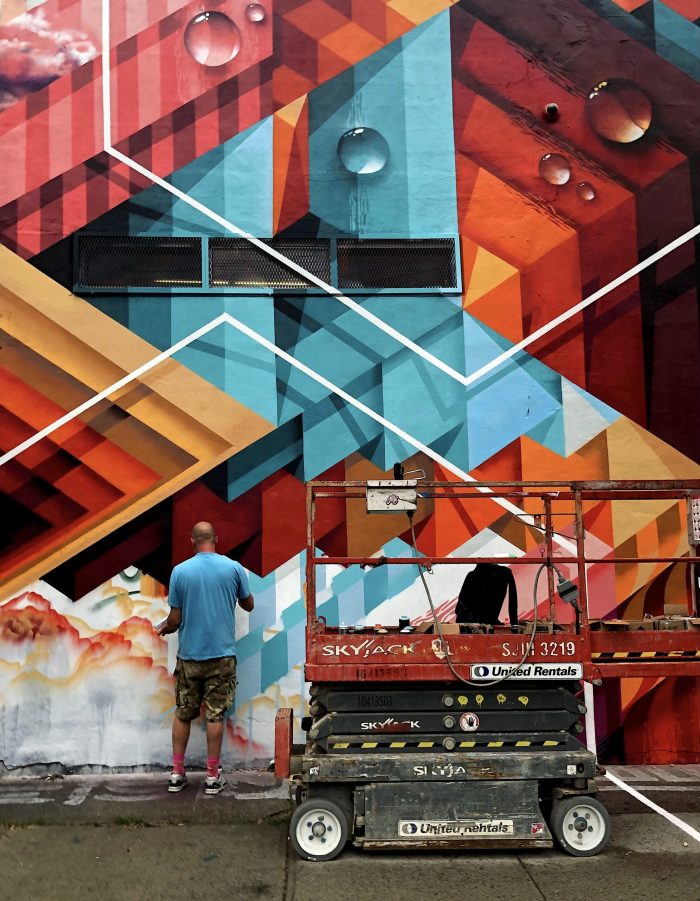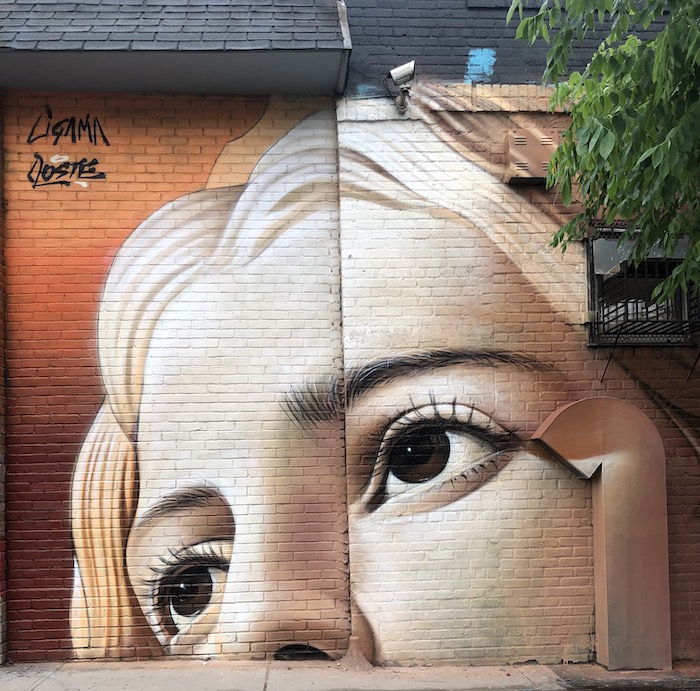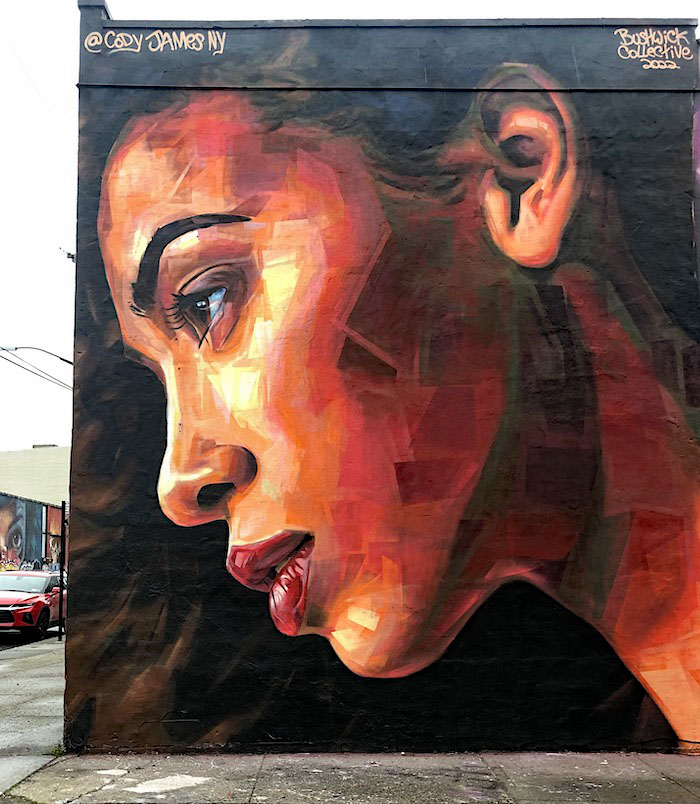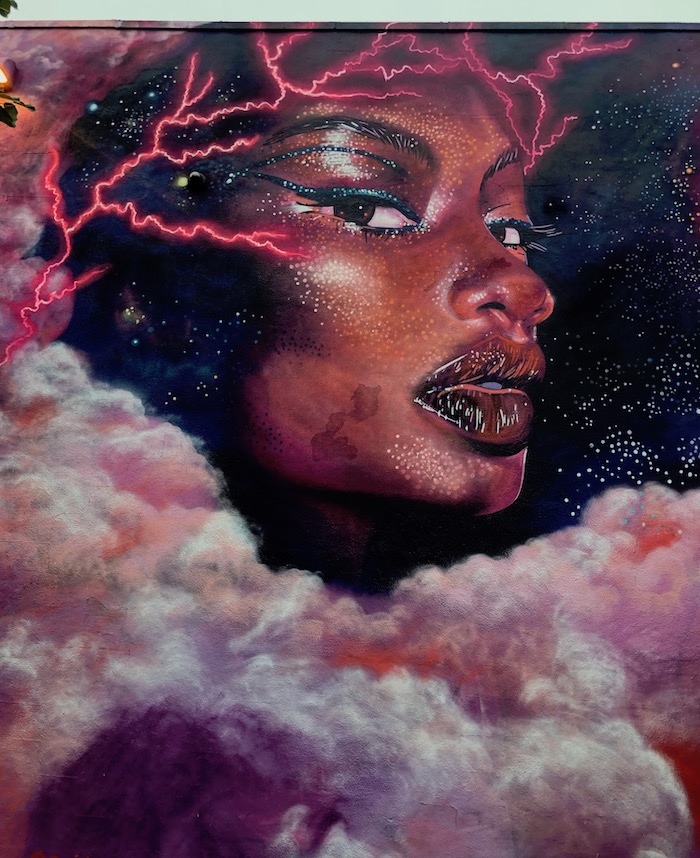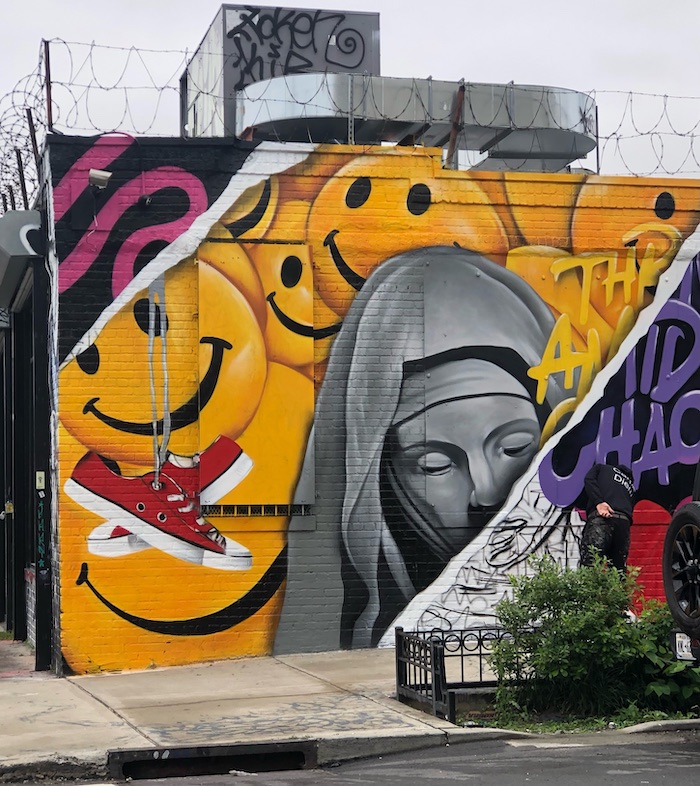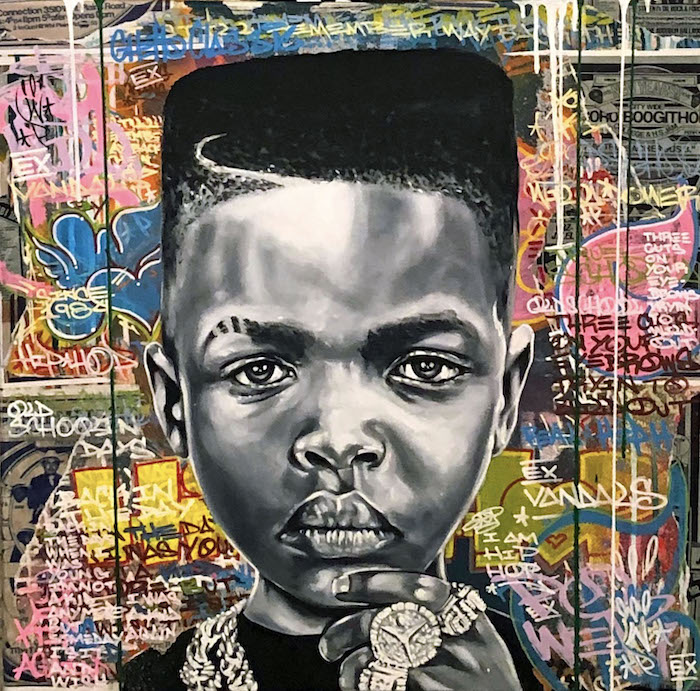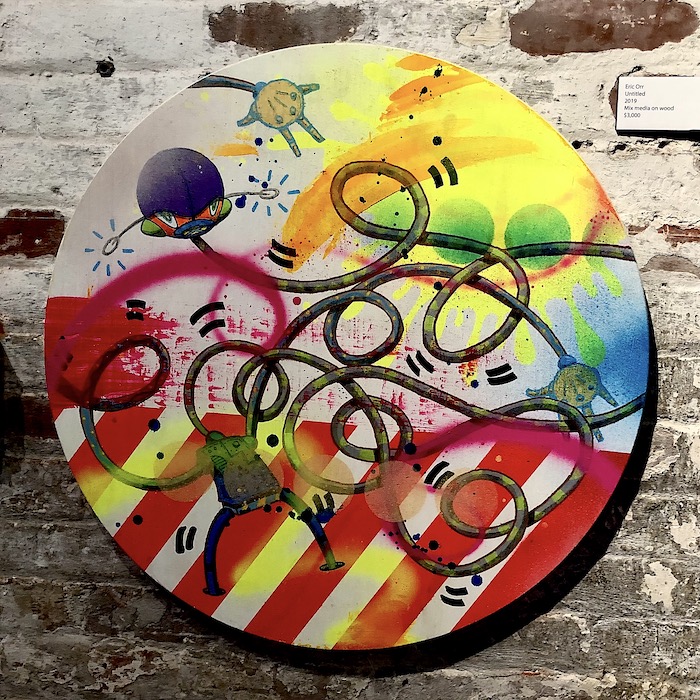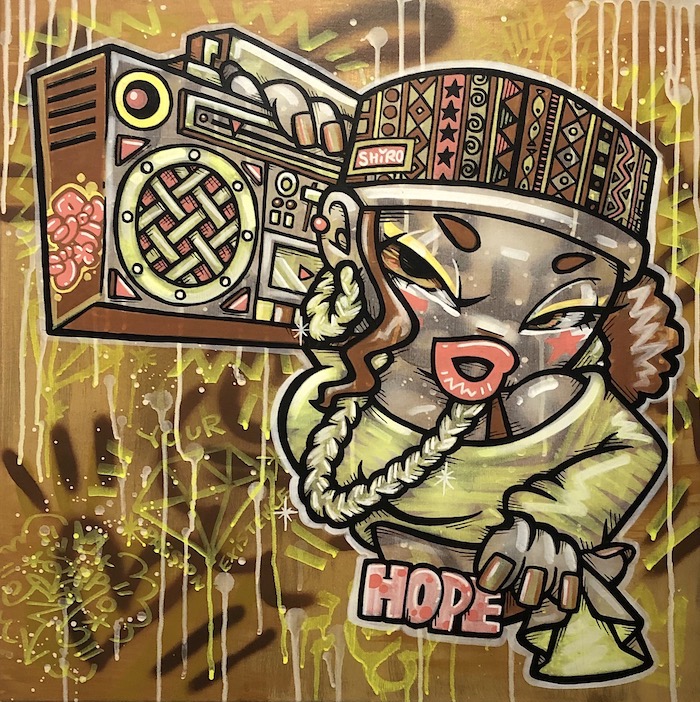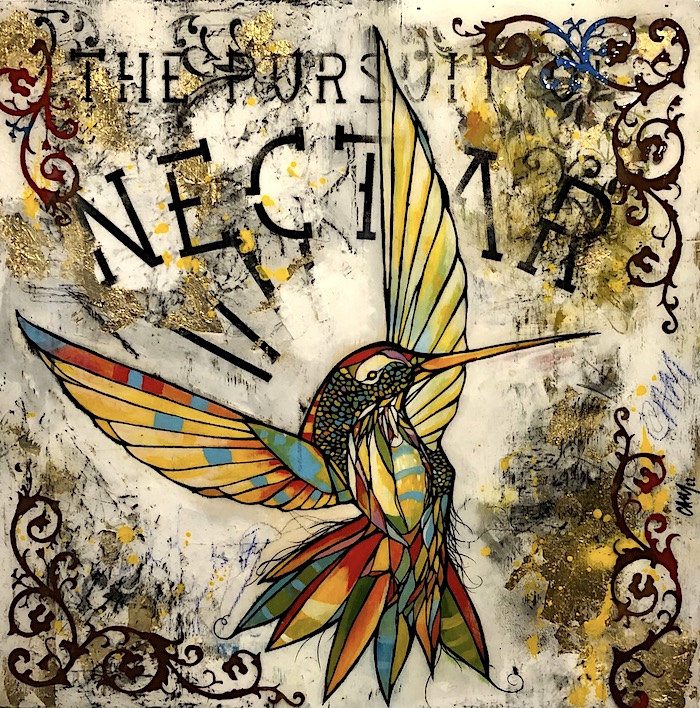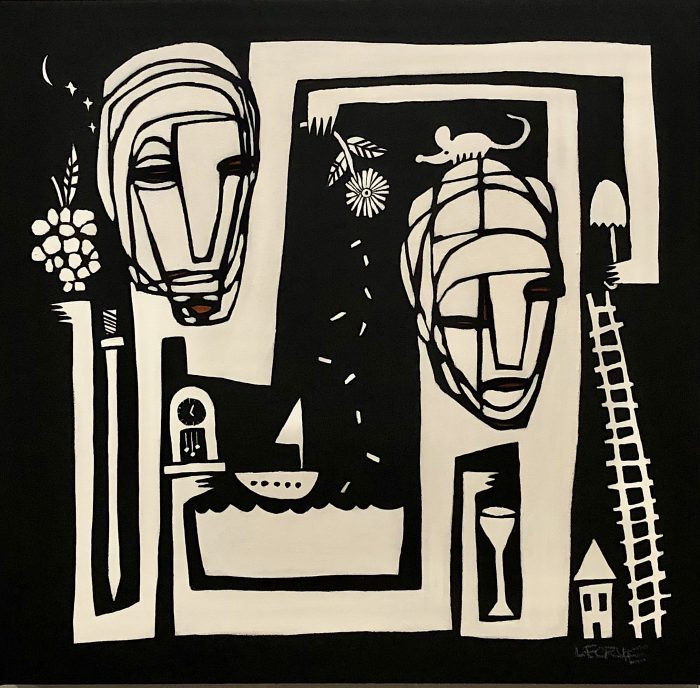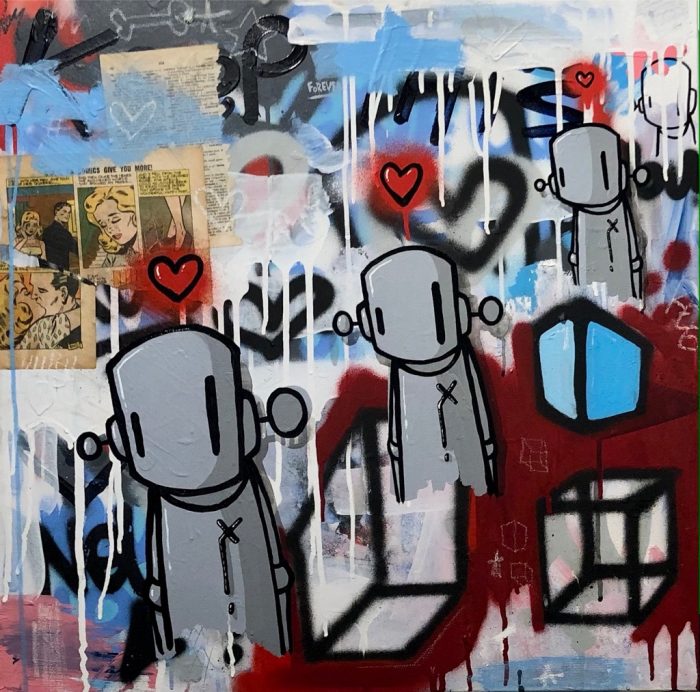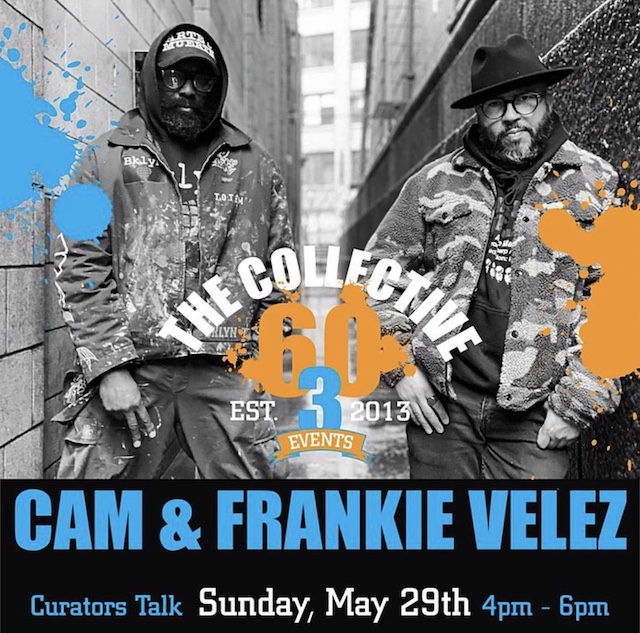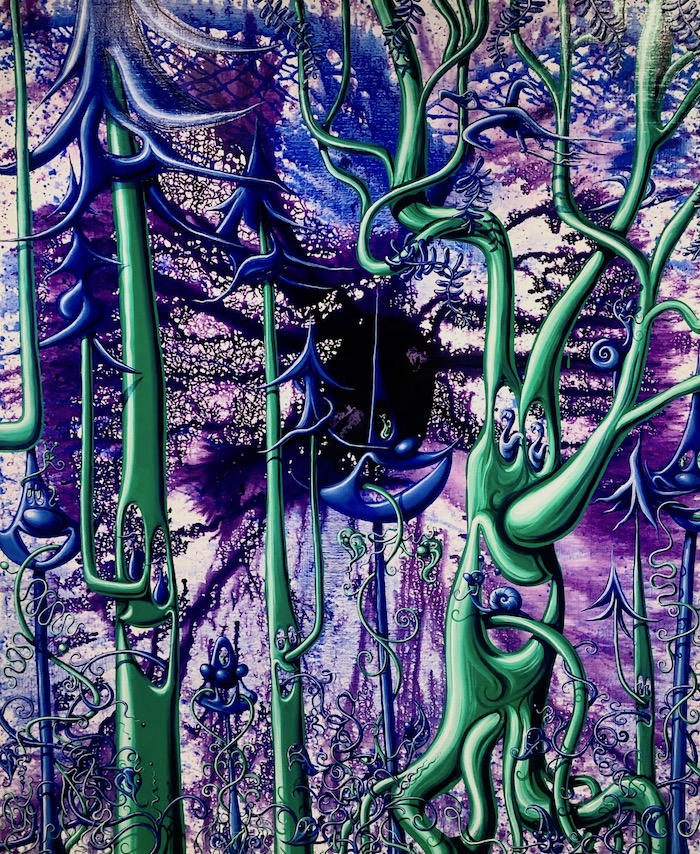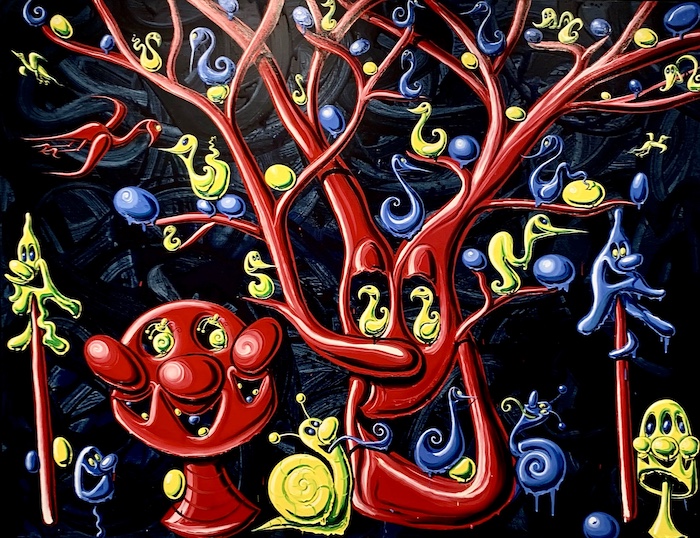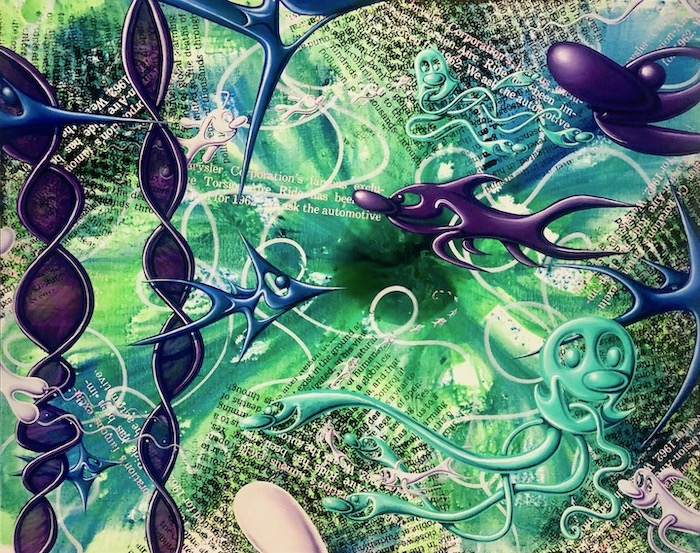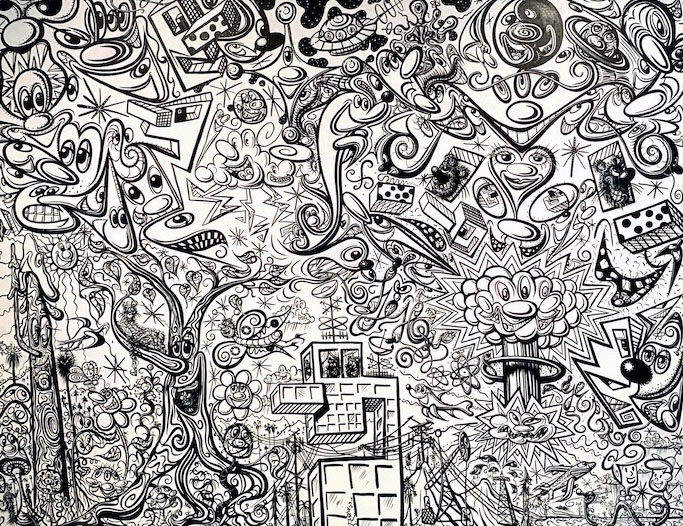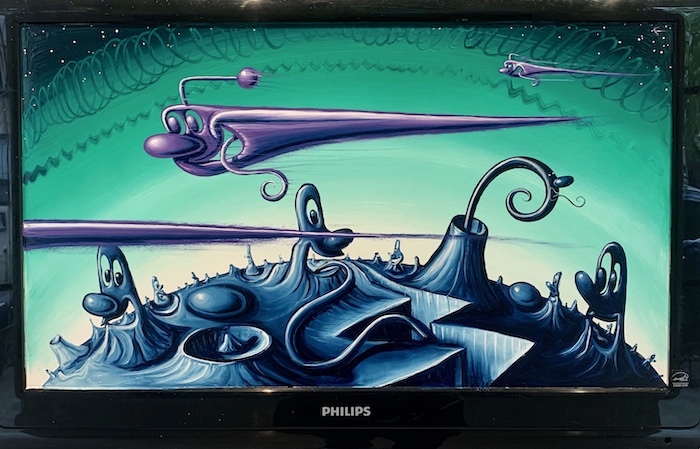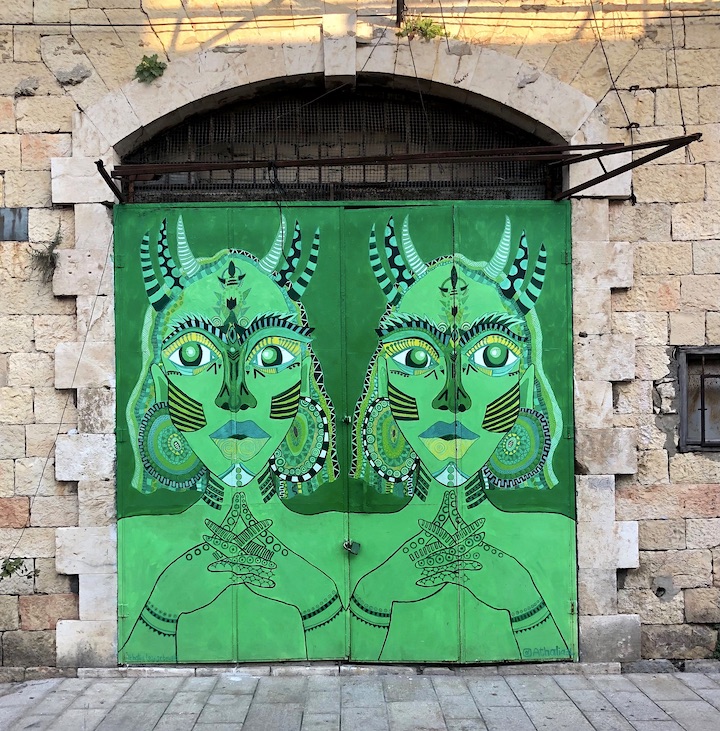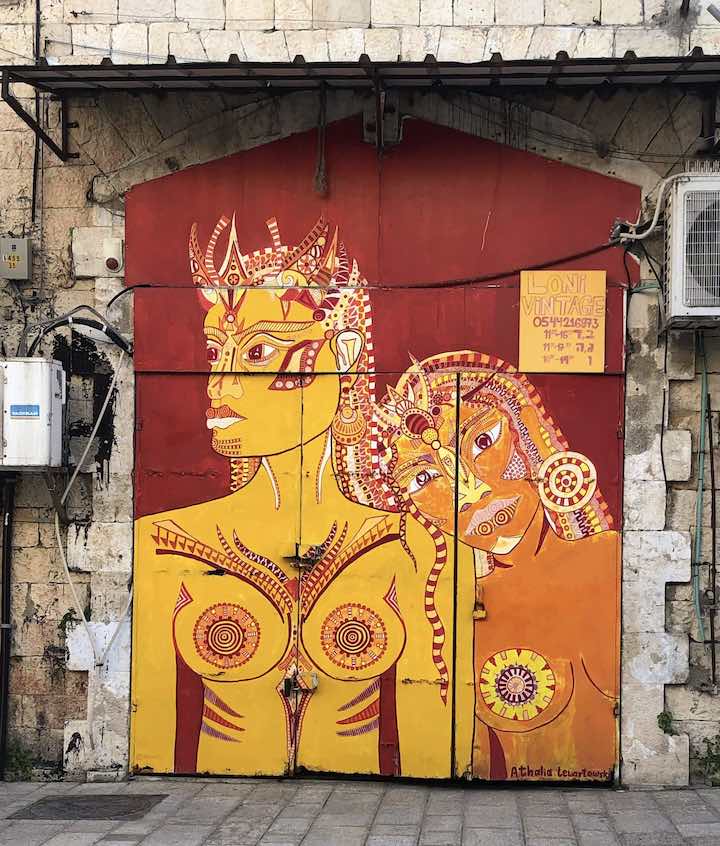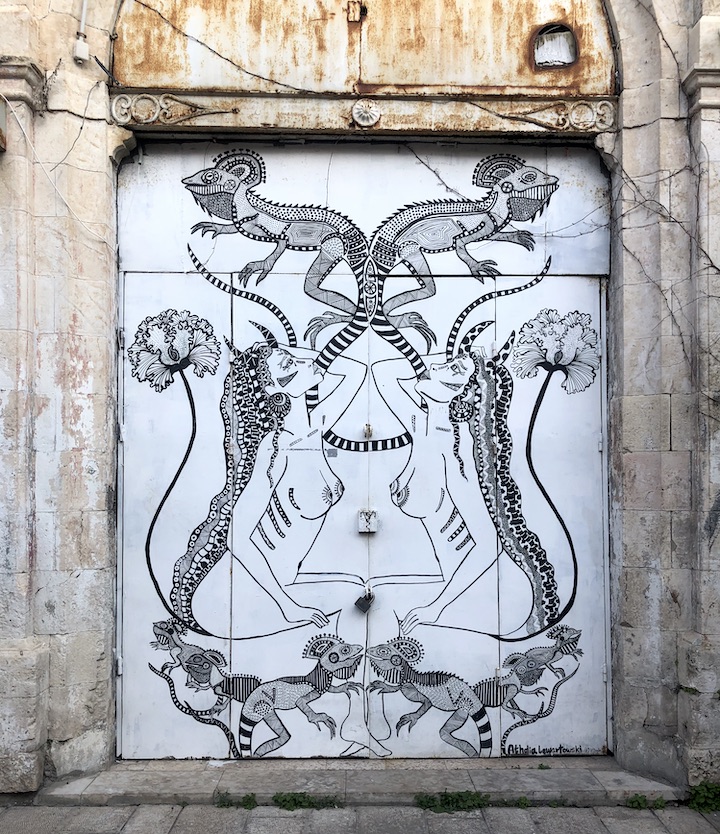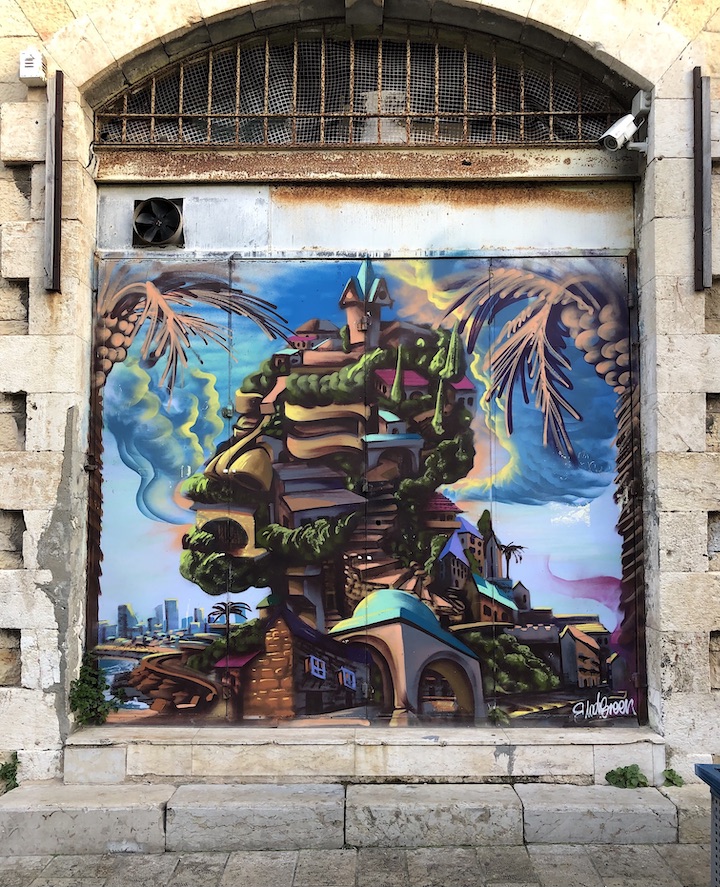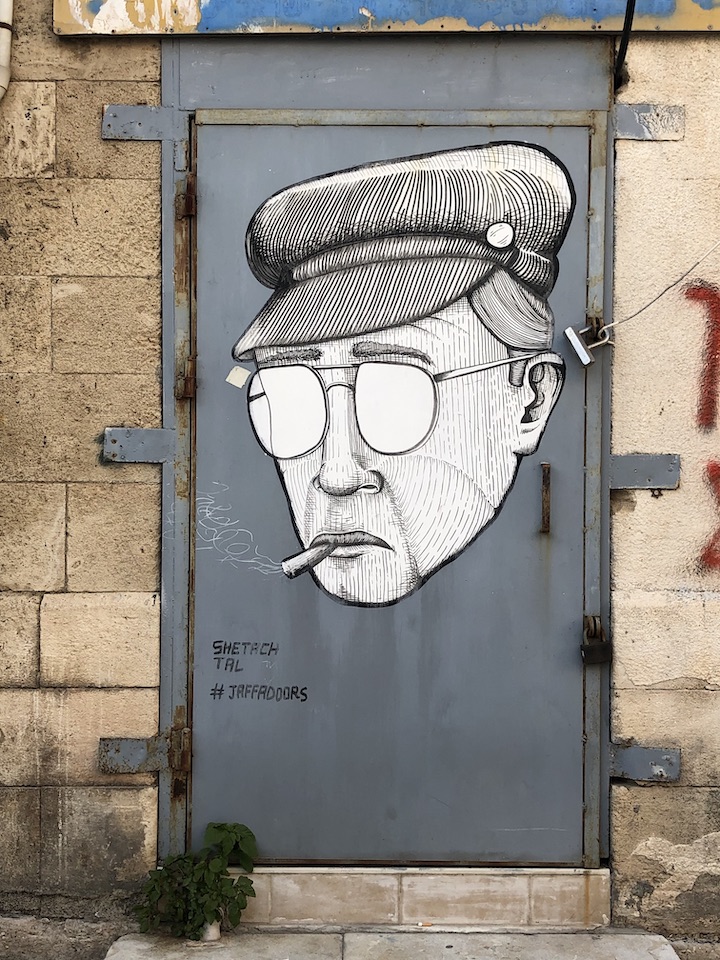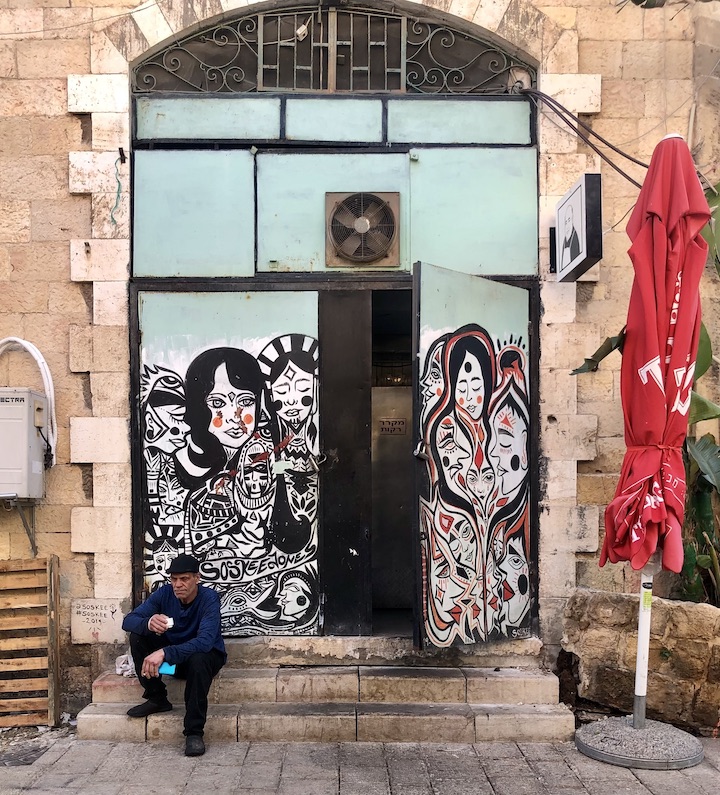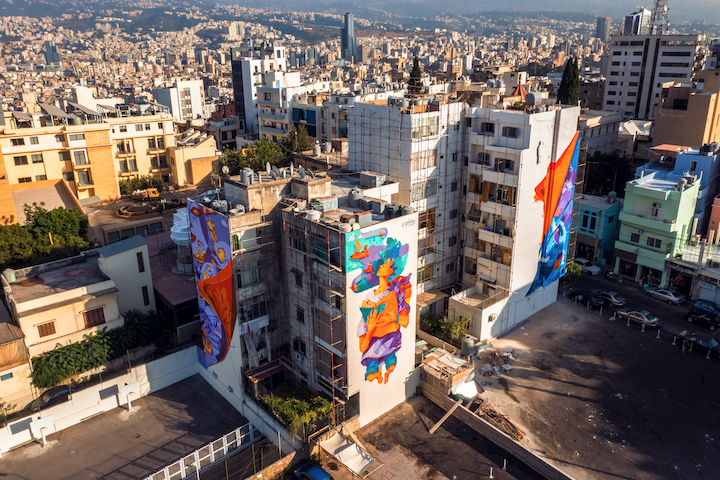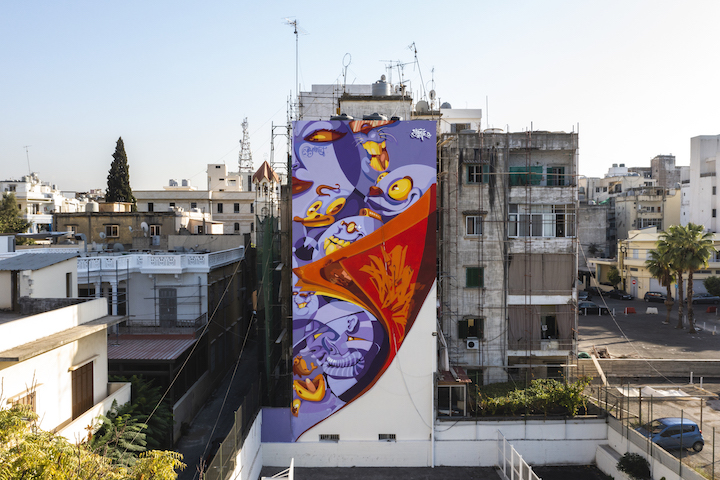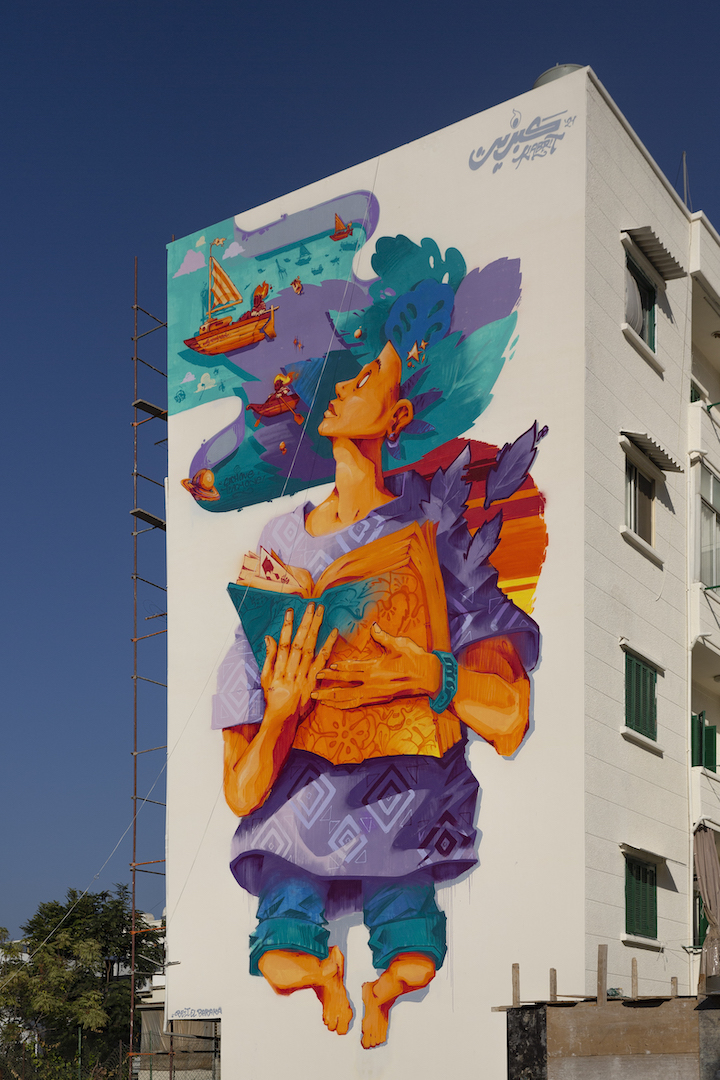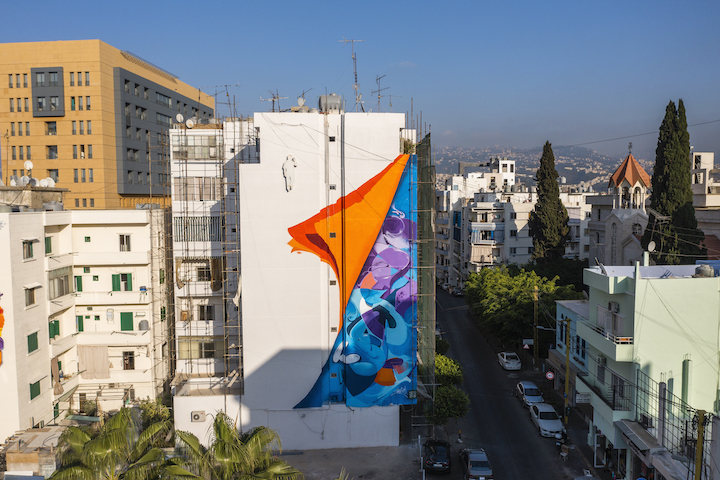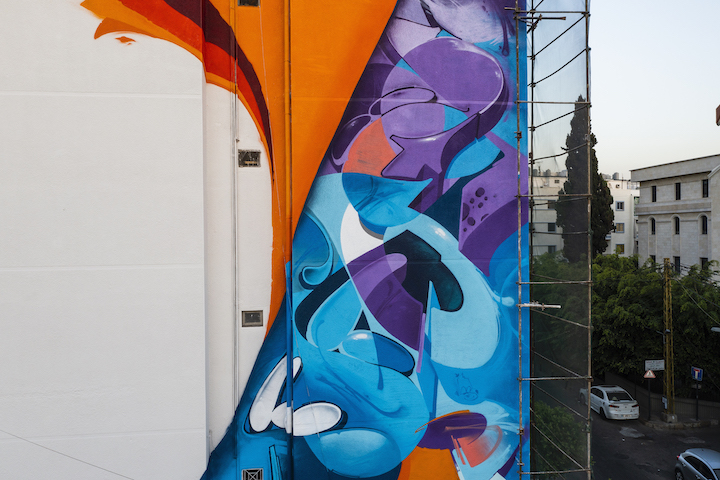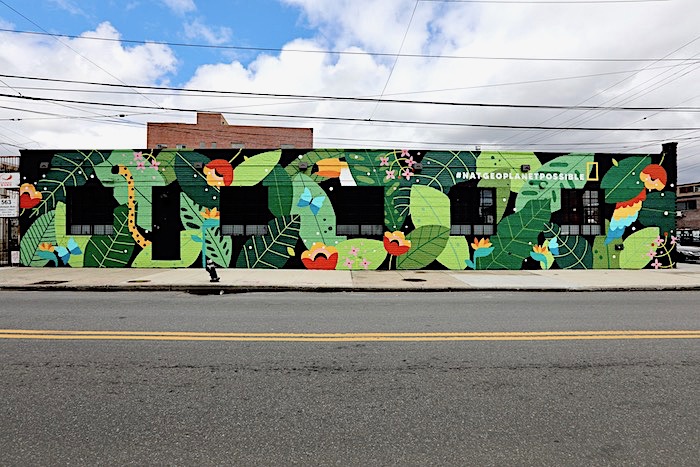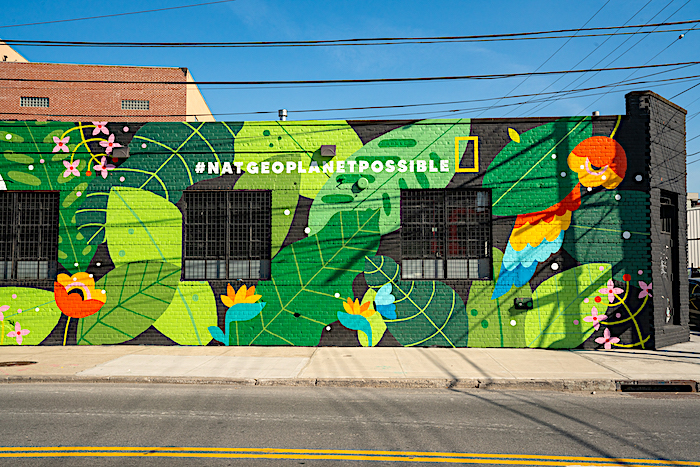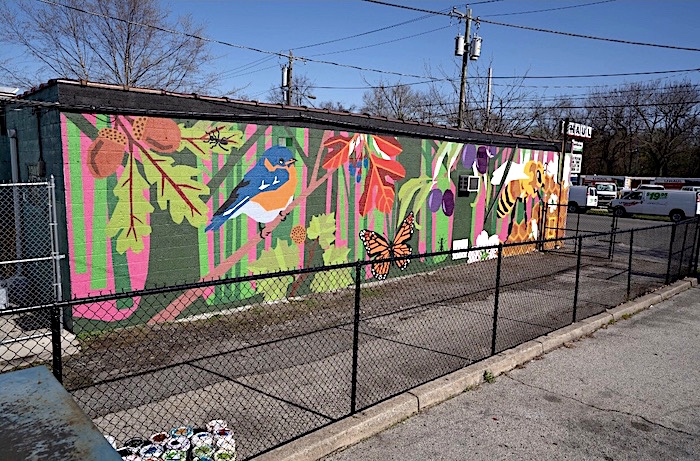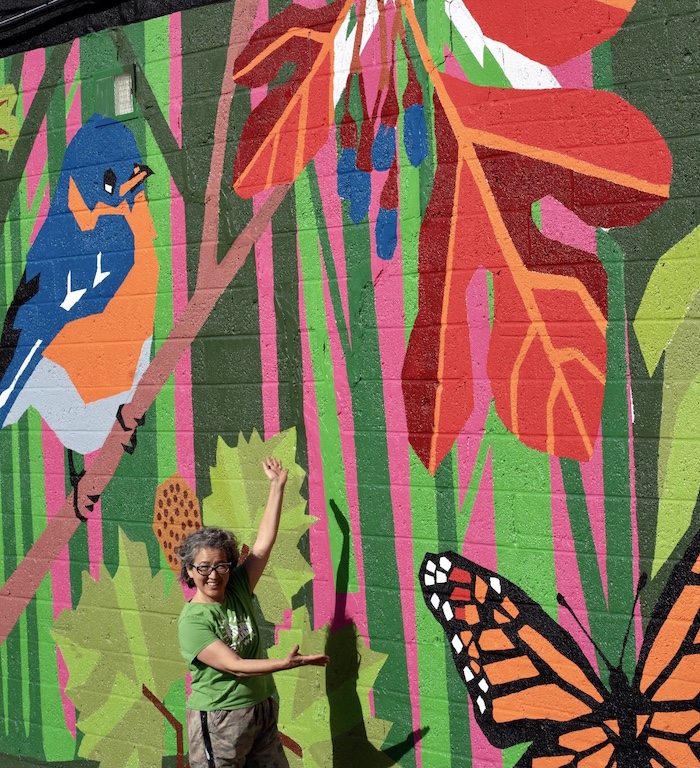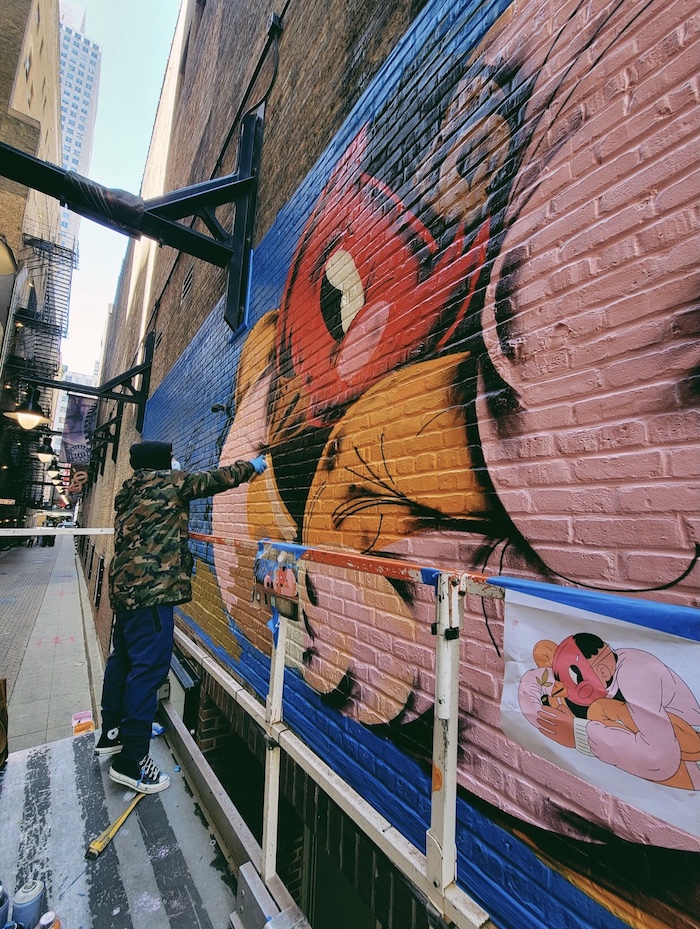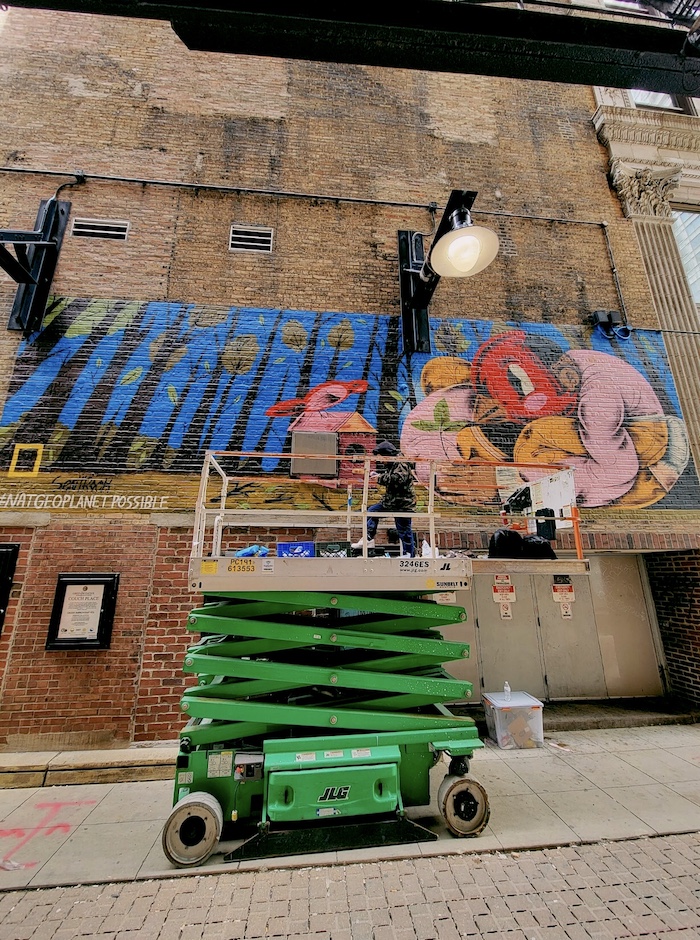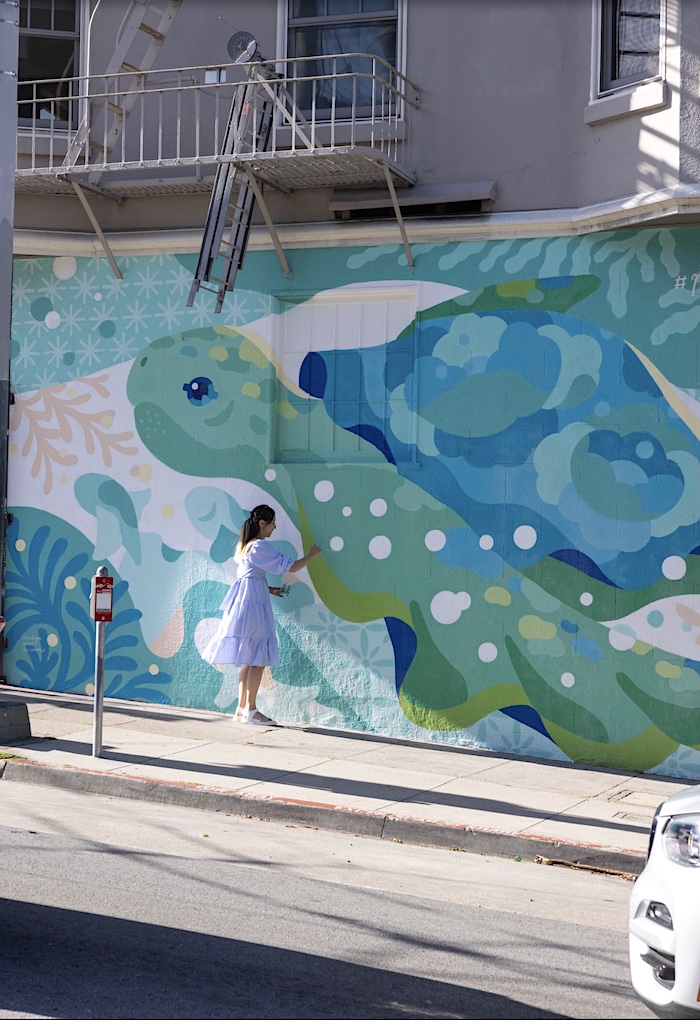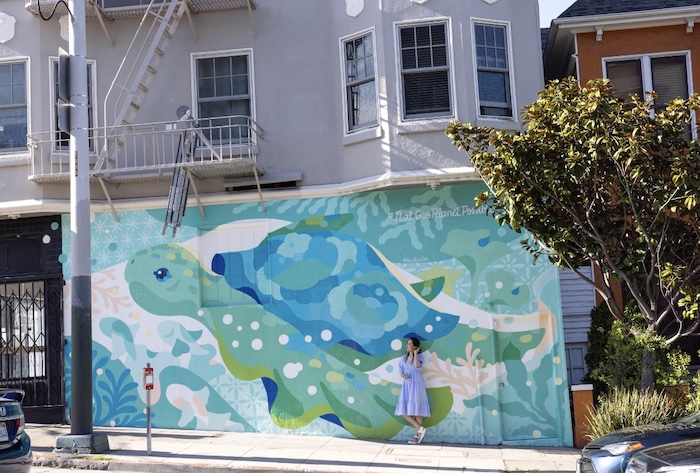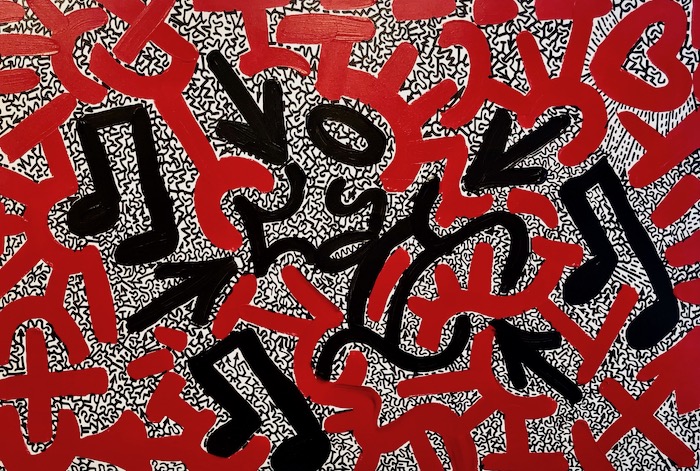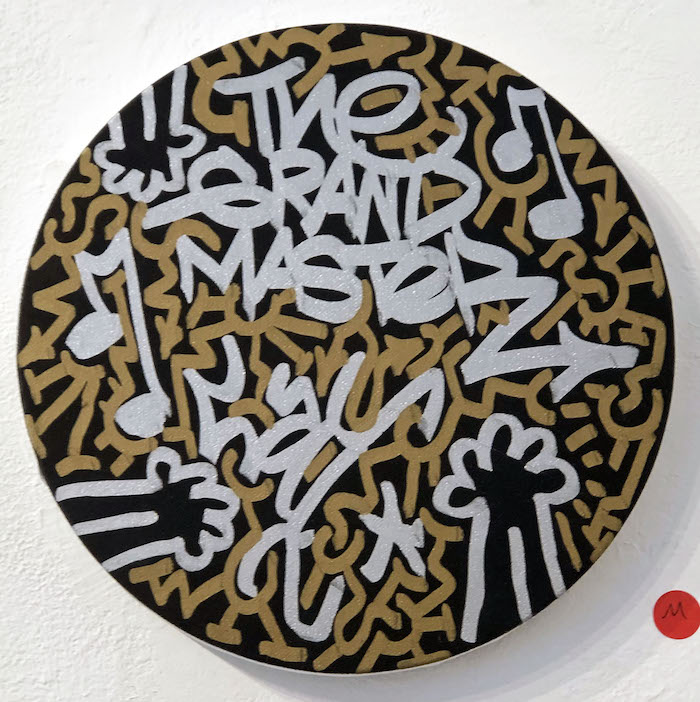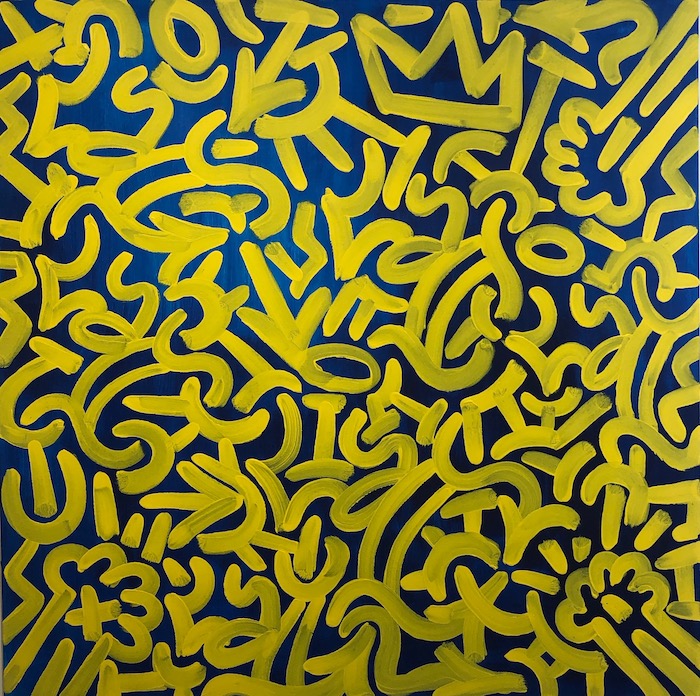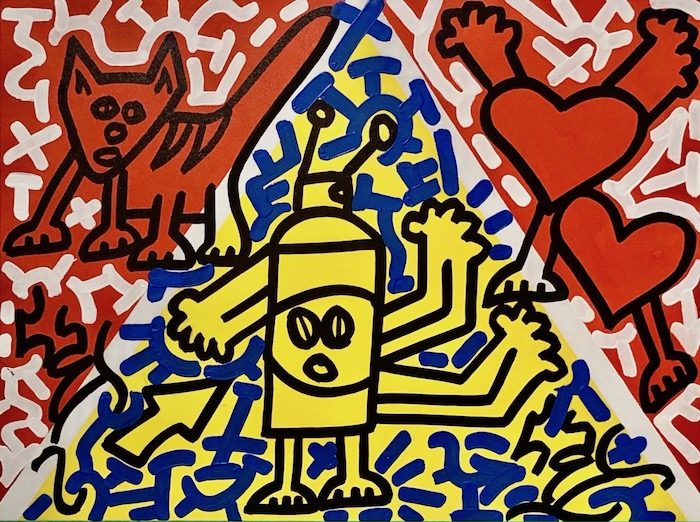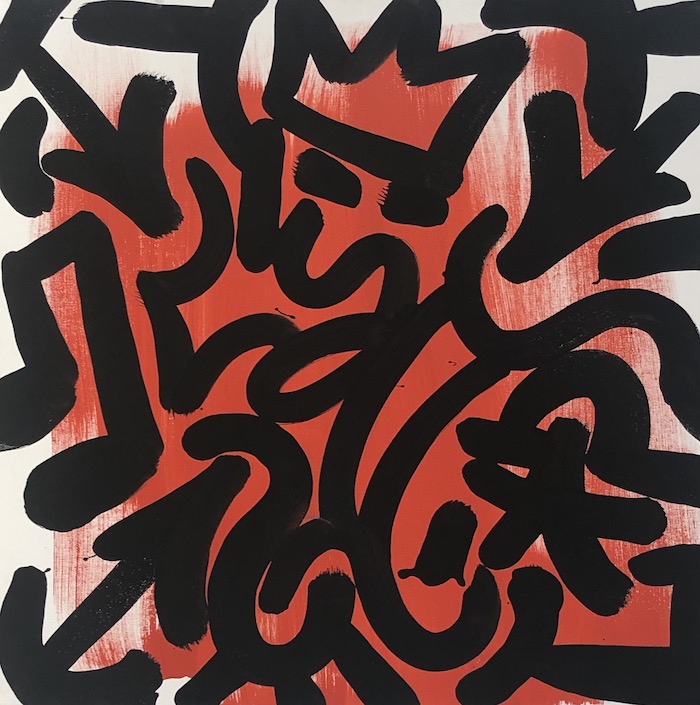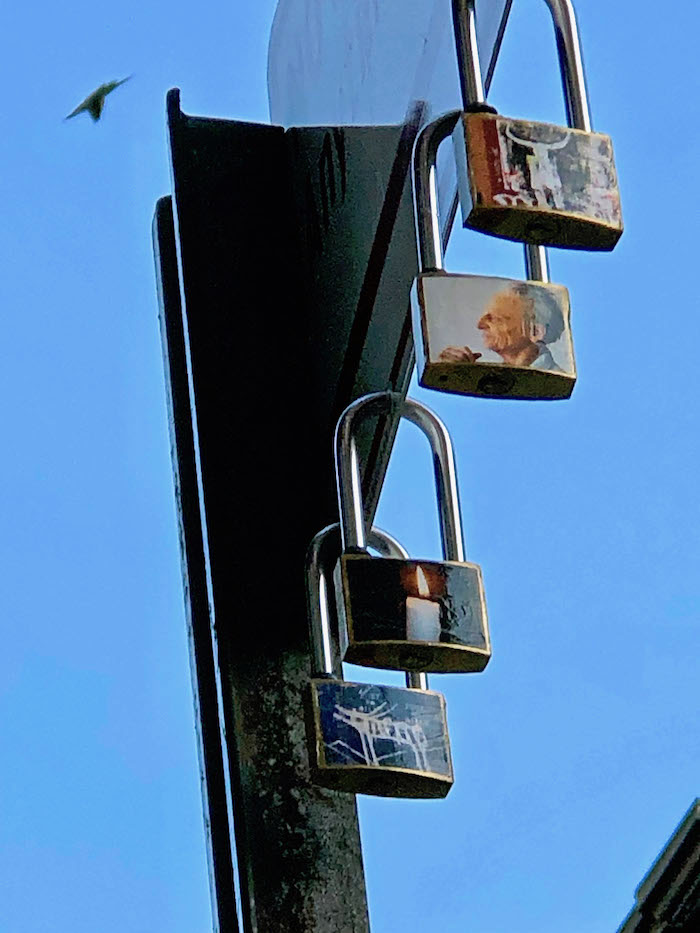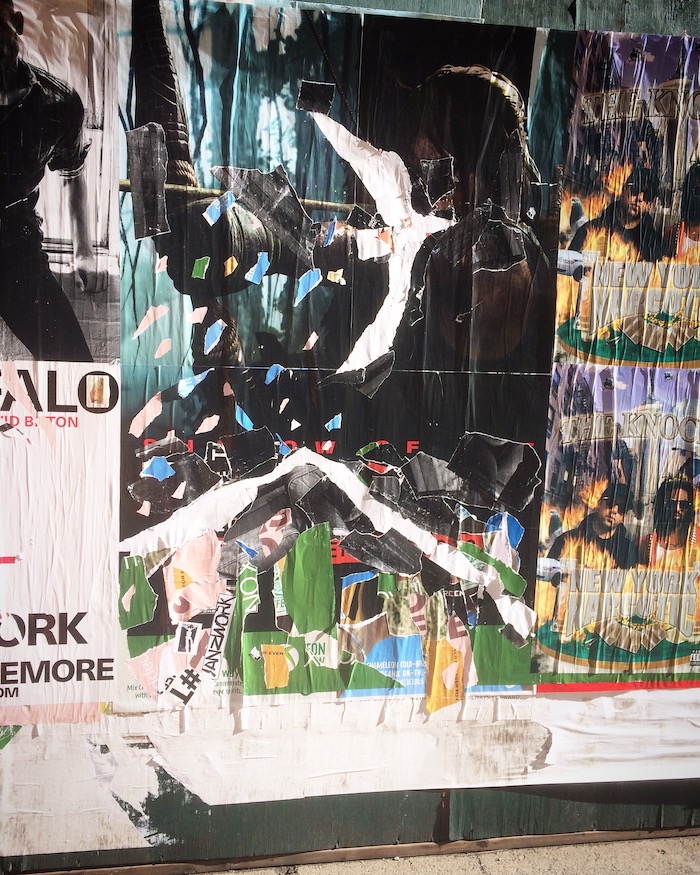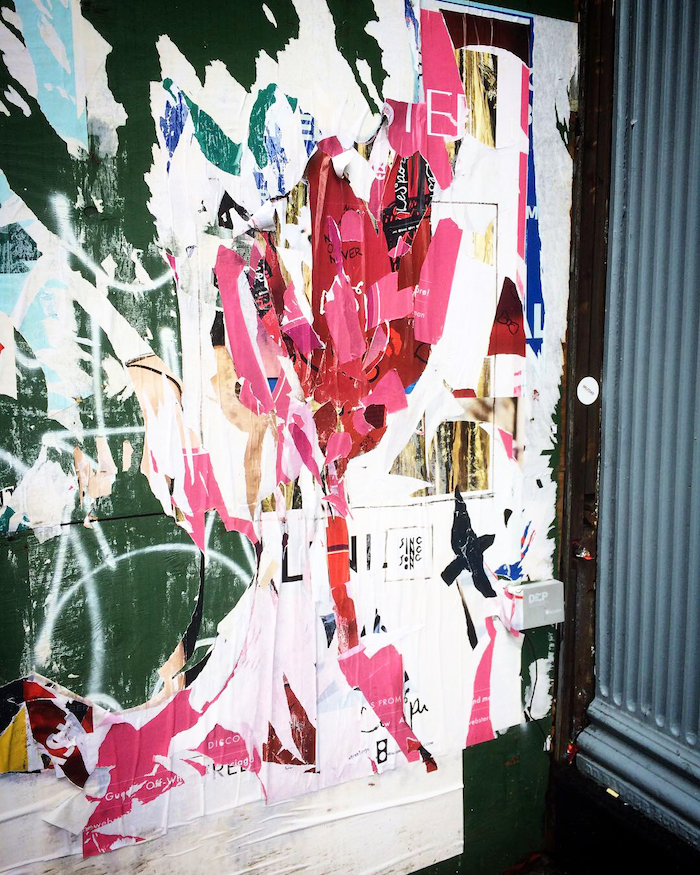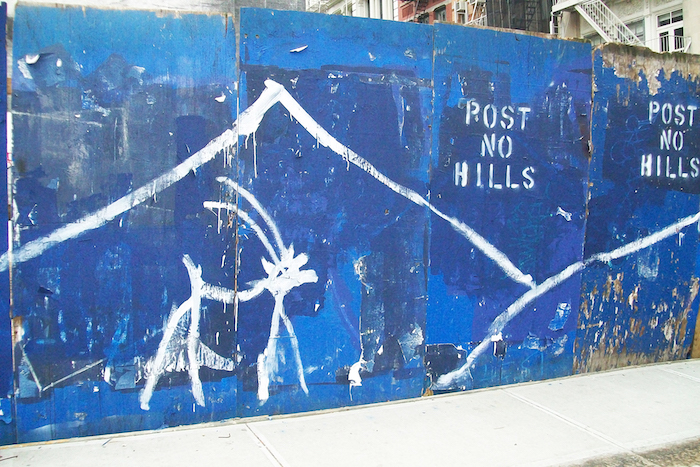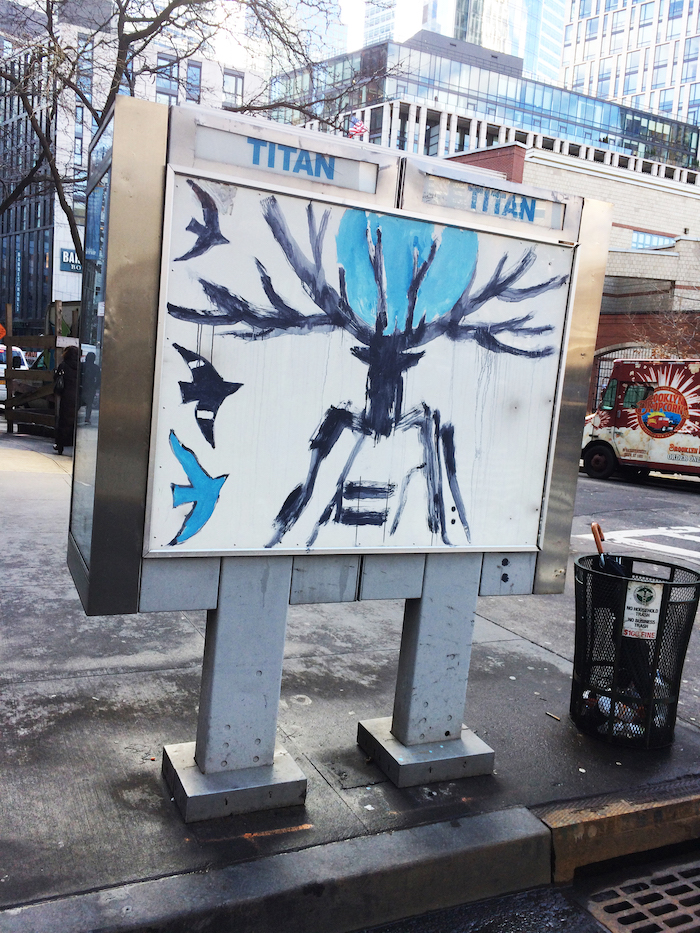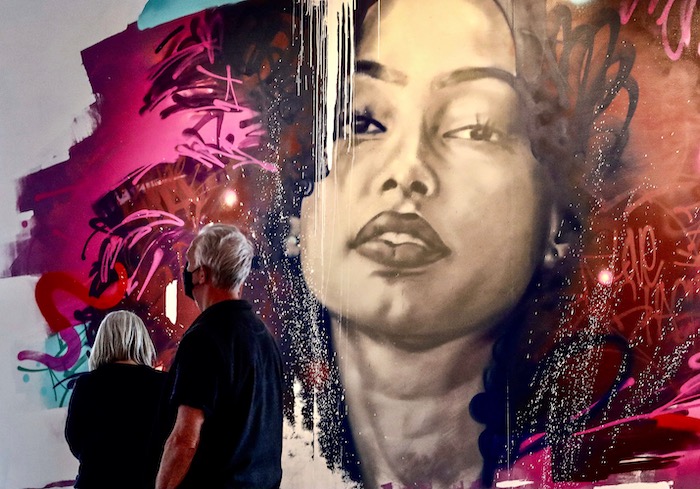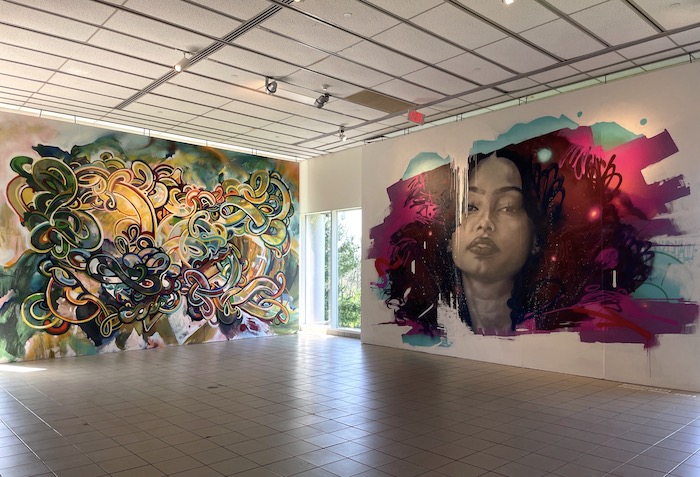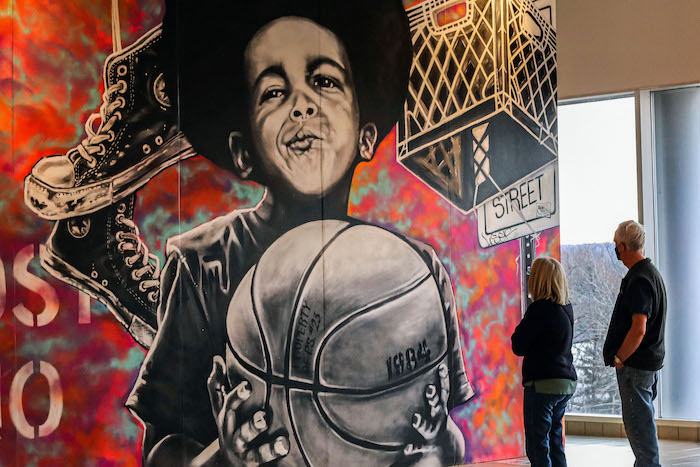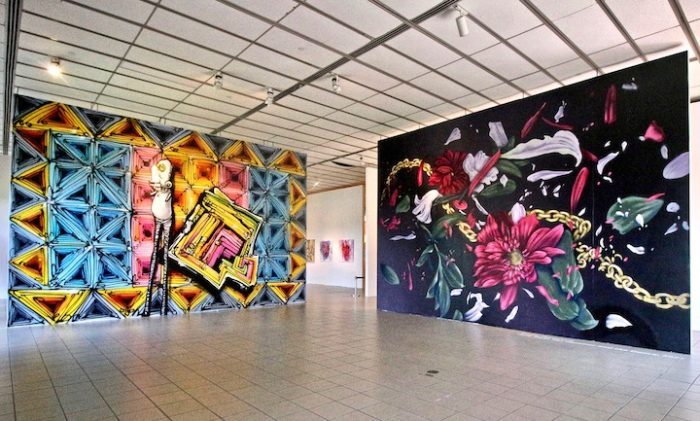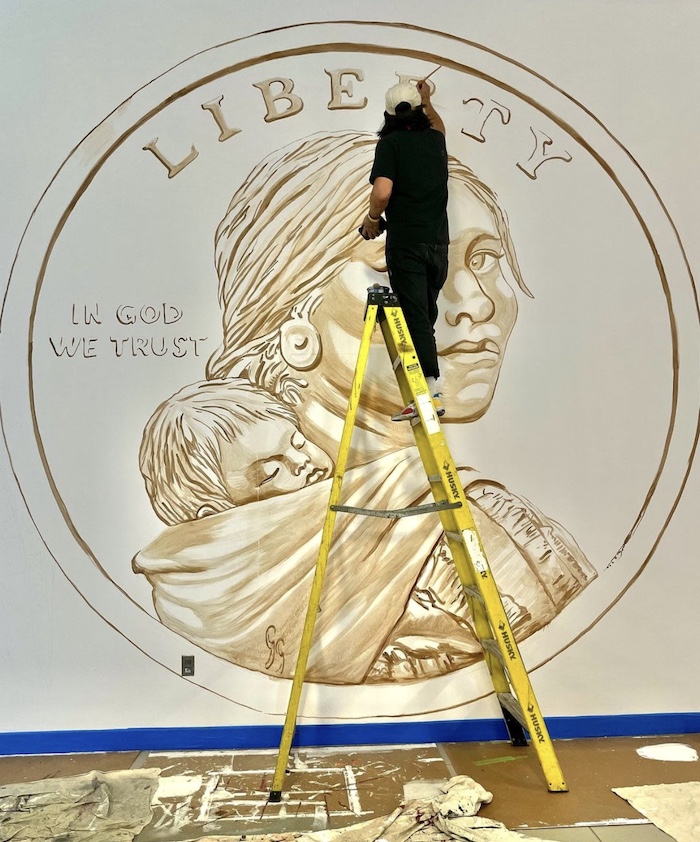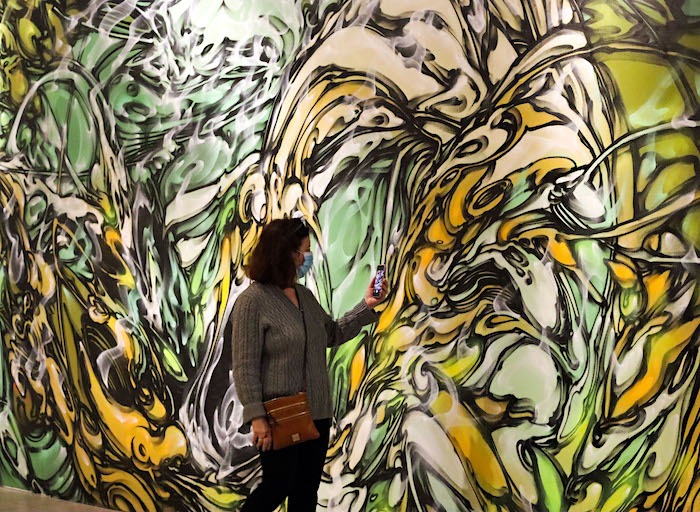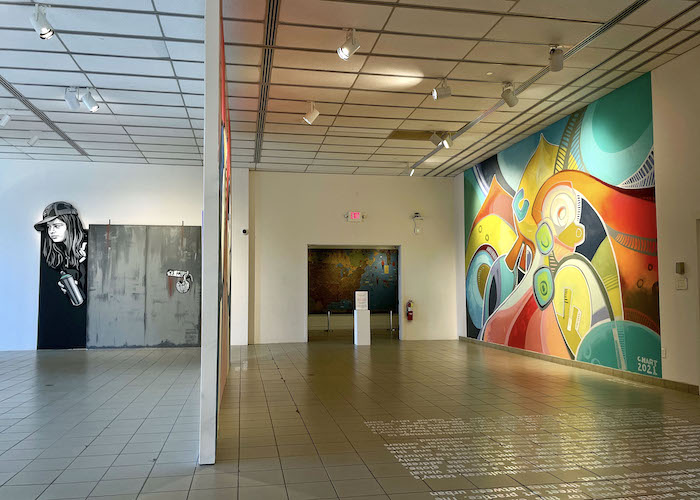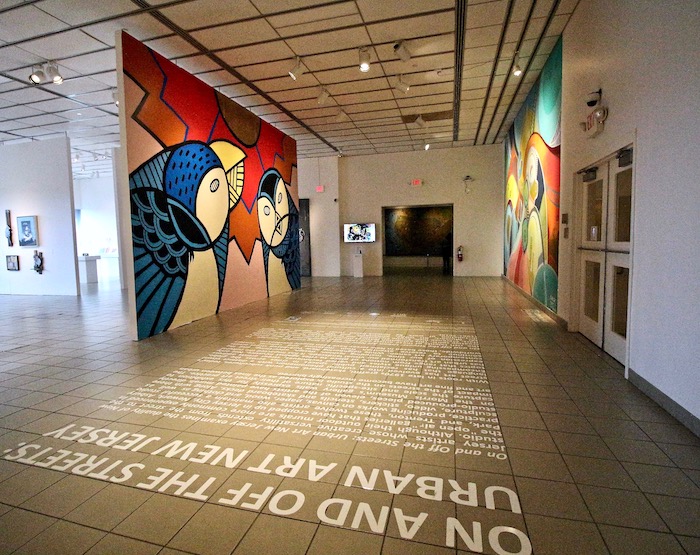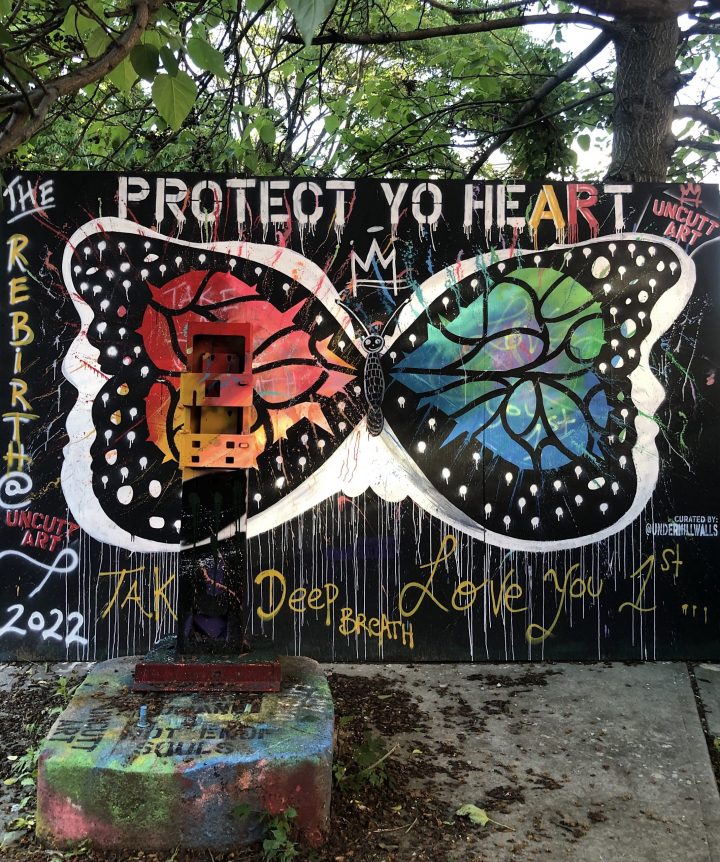
While checking out several new murals at Underhill Walls in Prospect Heights, Brooklyn last week, I was delighted to discover a new open air gallery just a few blocks away. Located at Washington Avenue and Clark Place and, also, curated by community resident and leader Jeff Beler, it hosts a captivating array of murals. A brief interview with Jeff Beler — its founder — follows:
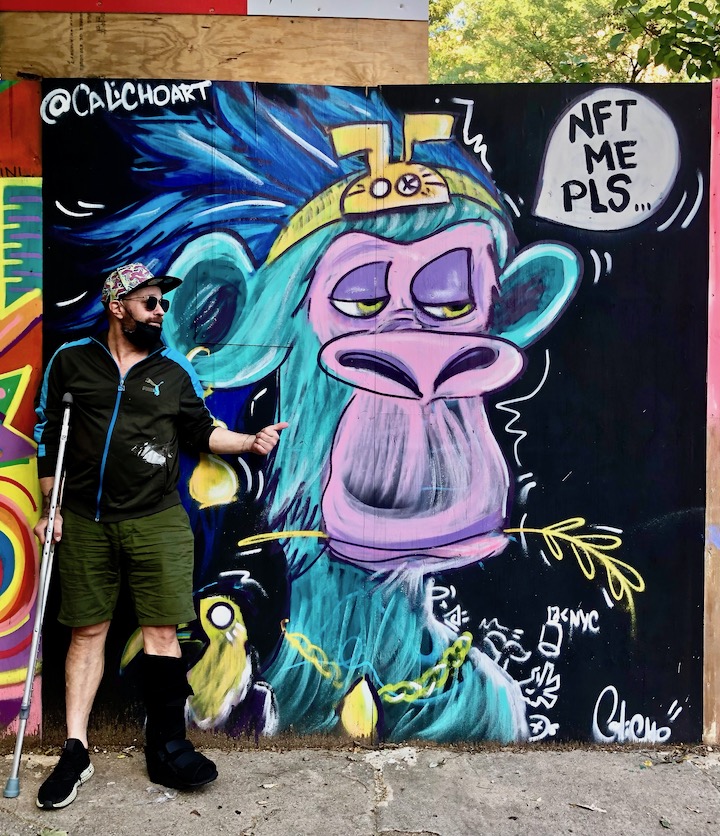
What a wonderful addition go the neighborhood! What motivated you to launch this new project, Washington Walls?
I’ve lived in this neighborhood for 17 years and this spot had always been an eyesore. It had originally been a garage, but it had been empty for years — with damaged panels in need of replacement.
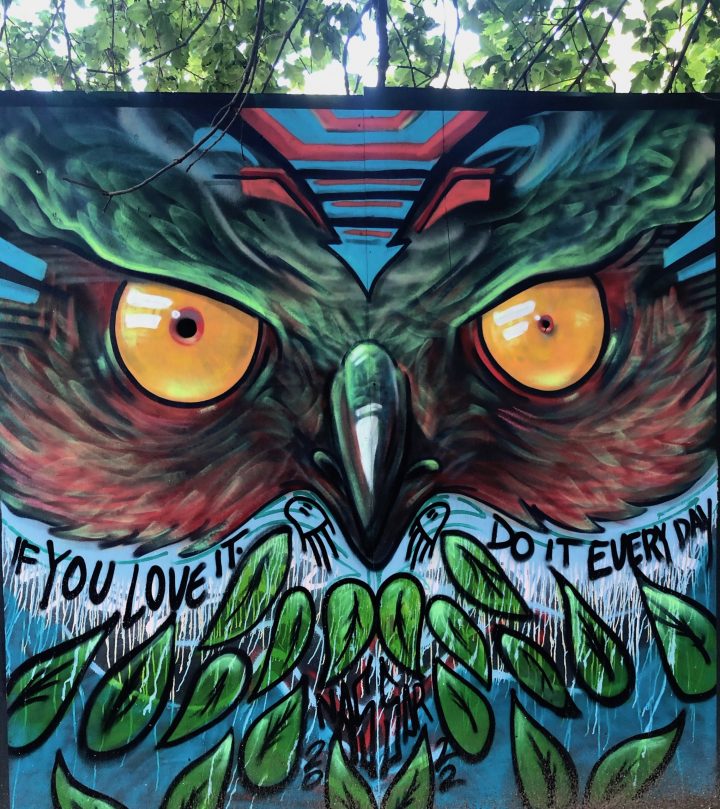
How did you made this transformation happen — in terms of permissions?
I spoke to the contractor who contacted the owner of the property. The panels were replaced, and I was given the “Go ahead!”
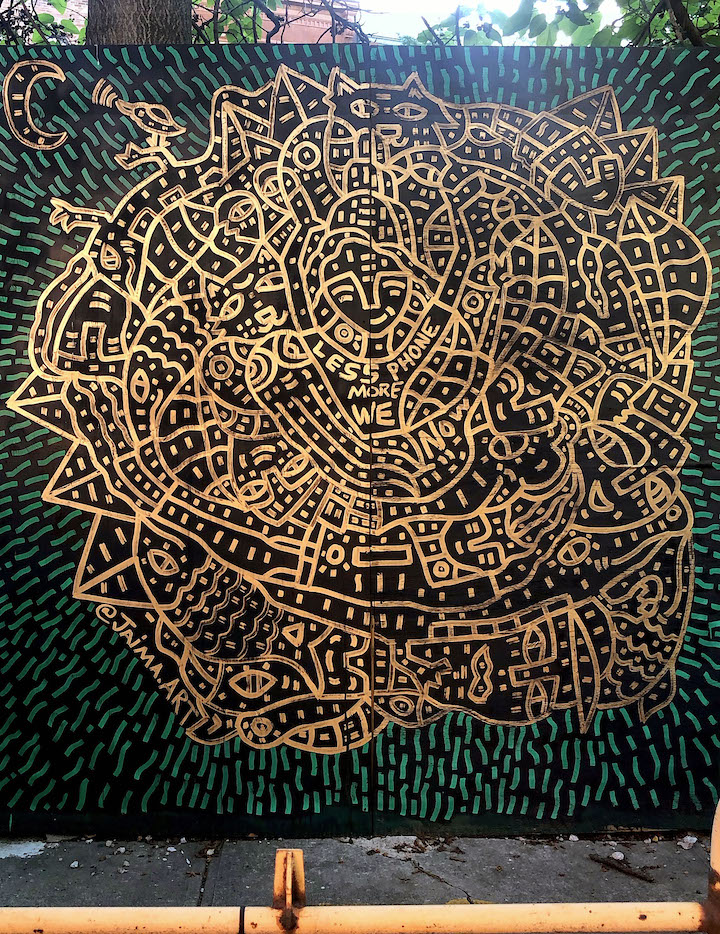
When did it officially launch? And how did it go?
In February — right after Valentines Day. The entire community pitched in. Kids got involved. Everything went beautifully, and we all had fun!
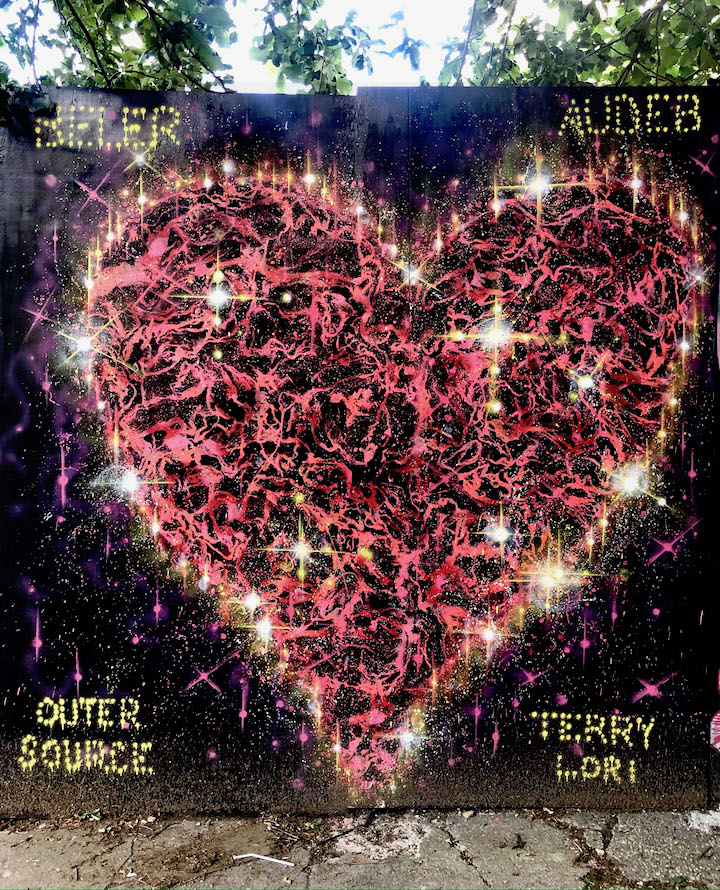
These walls feature such a wide range of talents, styles and themes. I am familiar with many of the artists from Underhill Walls and elsewhere, yet several are new to me. How were you able to engage so many artists? And how did they find out about this project?
I put up a post on Instagram that I was seeking artists to paint, and the response was great.
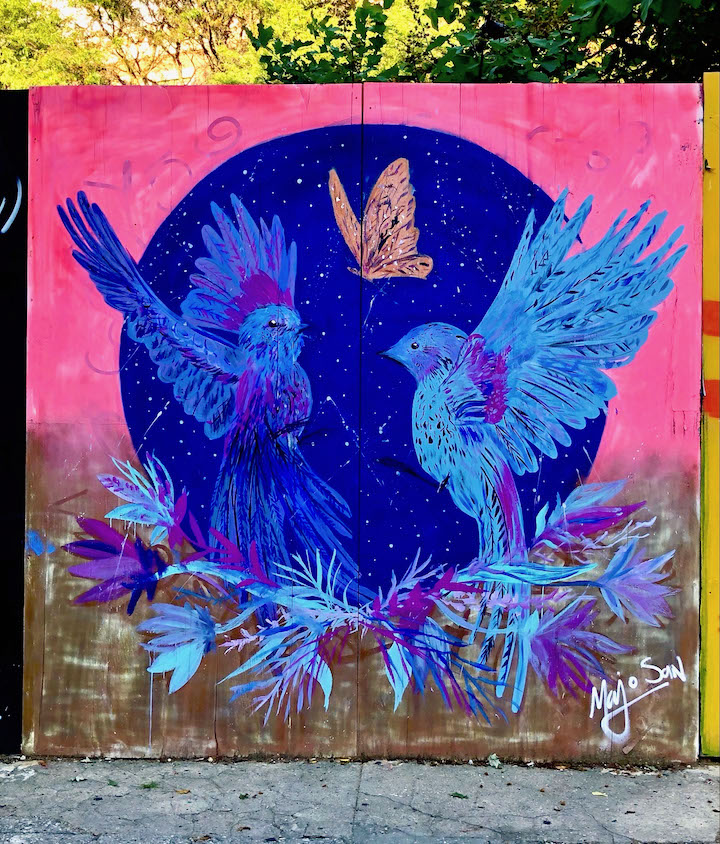
What’s ahead?
A second edition of Washington Walls in September. We are also planning to launch shirts, tote bags, prints and stickers, along with a book documenting the past seven years of Underhill Walls. And currently we are completing the newest set of murals at Underhill Walls featuring TV Nostalgia.
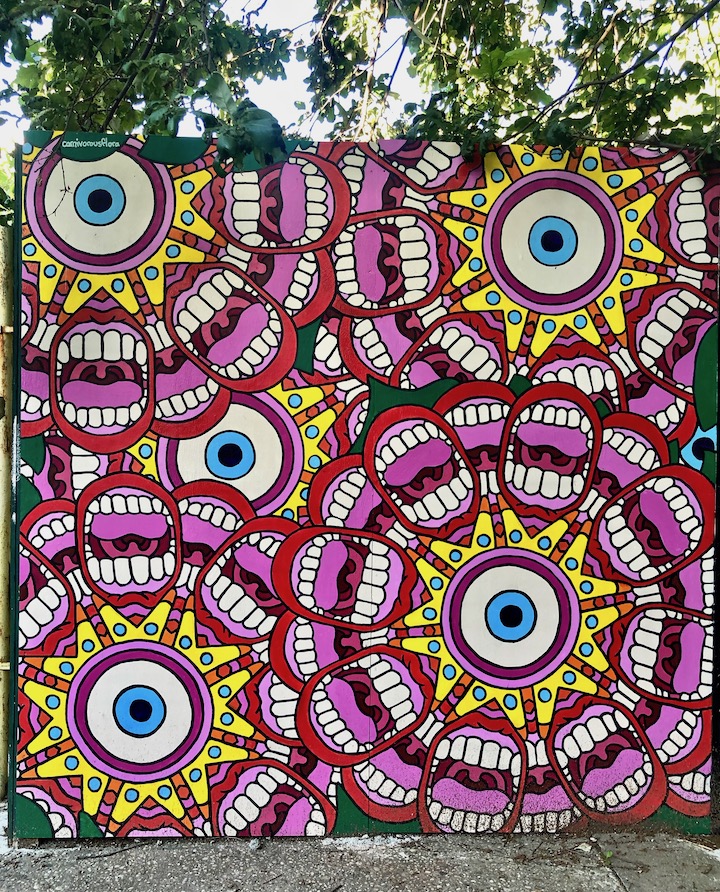
Murals:
- Uncutt Art
- Calicho Arevalo — with Jeff Beler on the left
- Paulie Nassar
- Jaima
- Outer Source
- Majo San
- Carnivorous Flora
Photos: Lois Stavsky
Interview conducted and edited by Lois Stavsky
{ 0 comments }
